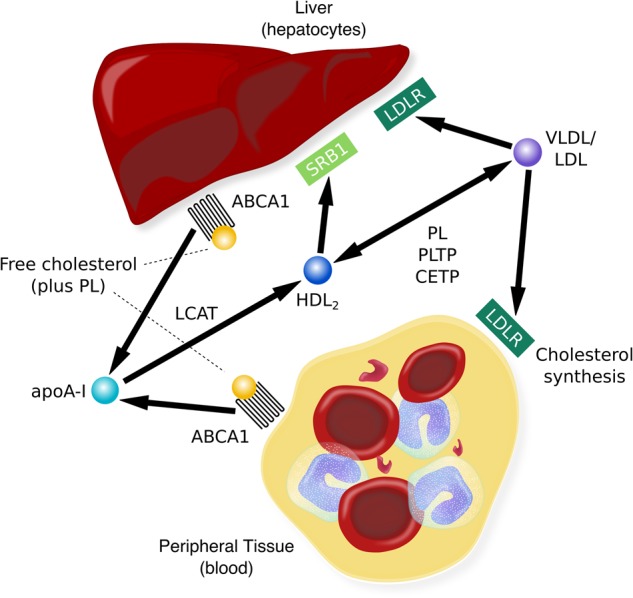Fig. 1.

Unesterified, or free, cholesterol (COH) from non-hepatic peripheral tissue is transferred, or effluxed, to esterified cholesterol, HDL, via the ABCA1 (ATP-binding cassette transporter) with apoA-I (the principal protein of HDL) as the acceptor. The presence of apoA-I activates LCAT, which esterifies free cholesterol on the surface of apoA-I to generate mature HDL particles. HDL can then transport the cholesterol to the liver for excretion via SR-B1 receptors or it can transfer cholesterol to VLDL or LDL, a process facilitated by CETP (cholesterolester transfer protein). LDL may be taken up by the liver via the LDL receptor (LDLR) while the remainder is taken up by extrahepatic tissues; slowing of LDLR activity results in an increase in plasma LDL levels [10]. Alterations in this process would have implications for the total amount of cholesterol available in blood and may be mechanistically relevant to the link between reduced cholesterol and suicidality, one which might be leveraged for risk prediction and diagnosis and ultimately treatment
